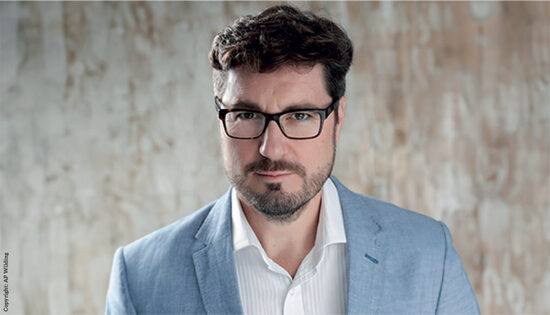With a strong focus on US citizens and an office in Hong Kong, opened in 2011, as well as its headquarters in central London close to Regents Park, London & Capital has an international flavour to the way it approaches asset allocation.
The wealth management firm was established in 1986, and has since grown into a team of 90 people managing more than $3.7bn for private investors, families and institutions.
Investment director Ashok Shah joined London & Capital in 2002, having previously worked for Old Mutual Asset Managers, where he was latterly head of emerging market equities.
Focus on liquidity
A fellow of the Institute of Actuaries, Shah says that since 2008, London & Capital has focused on very liquid investment strategies for their high net worth and ultra-high net worth clients who will typically have at least £500,000 for a bespoke portfolio. For those who have tolerance for illiquid strategies, Shah’s team will create real estate portfolios or flow in other types of assets and vehicles.
The diverse range of clients often demonstrate strong financial literacy, falling into such categories as fund managers, proprietary traders, heads of desks in the investment banks, or key people from the hedge fund world.
The clients who are US citizens working abroad, such as non-dom green card holders in the UK, will have international portfolios with complicated tax issues, but Shah is keen to stress that “the solution we create is applicable to the whole community. It’s the way you wrap it, the way you deliver it. That’s how you make it tax efficient.
“But also you make it legally efficient. It’s a very complex area so we work closely with international tax accountants, consultants, lawyers and estate planners.”
Each of the liquid strategy packages fit into a spectrum of risk return boxes, so a very conservative client might choose a growth-focused, balanced portfolio to suit their needs.
Bespoke vs collective
The portfolios are invested directly in equities, fixed income cash and deposits, though for smaller clients the firm does use collective funds. “But most of the clients that we have would want their own bespoke managed account,” Shah says.
Dedicated in-house investment managers run four equity packages with different risk return and profiles, three fixed income strategies, one commodity strategy, and two hedge fund strategies. Drilling down into one of the asset areas, fixed income, a client could have exposure to emerging market bonds, financial bonds, and high yield bonds drawn from a long list.
The use of collective funds is a “side show and the thrust of the company is to create a bespoke solution for each family. Very rarely does a collective appear in a bespoke solution, whether it’s our collective or somebody else’s”, Shah says.
His view of exchange traded funds (ETF) is a strong one. “Very rarely would we use ETFs because we think ETFs are not what you think they are. People say you should buy ETFs because they are very cost efficient but ETFs normally have good, bad and ugly within them which far outweighs the fact that it might be costing you 20 basis points per annum.”
“If you buy an ETF you get a full index which is made up a lot of sub sectors and there are things that you should never hold so your return is going to be quite corrupted.”
Measuring up
London & Capital actively manages portfolios tailored to what the client wants and the four equity solutions shown on the right are L&C Star (UK and US companies), Western Star (UK, US and Europe), Global Star (the world), and Dragon Star (UK, US, Japan and Asia).
The portfolios must stay within the aggregate risk allowance but this leaves room for many combinations of low, medium, and high risk investments, with minimal currency risk achieved through typically using three-month forward hedging, if that is what the client wants.
So where are the overweight or underweight positions in the portfolios? “We don’t have a benchmark like a FTSE or S&P so when you say ‘are you over or underweight?’ it doesn’t always apply to London & Capital because we are creating an absolute return type of portfolio for our client. It tends to be conservative.”
It is the firm’s overarching investment decision process that tells Shah what to avoid and where to allocate the money.
“Our view has been to go for income generating assets. It’s been like this for almost three years.”
Avoiding volatility
In the equities space, London & Capital favours global multinational companies with a preference for the US over Europe.
“Our strategy has been to avoid the eurozone full stop, except for a few multinational equities that we have been picked up, and we don’t have many European bonds.”
Shah also likes emerging markets but he is very selective. “Typically clients do not buy anything directly in emerging markets. They will get exposure because 50% to 60% of the turnover of the stocks that we pick comes from emerging markets – through the multinationals. Our clients are very conservative and emerging markets are incredibly volatile. Our asset allocation will take you into global multinationals and emerging market debt which will give exposure.”
If a client wants more exposure to emerging markets the Dragon Star portfolio package gives that opportunity.
The portfolio shown (top right) is for a balanced client with 2.8 million dollars invested. Yet as Shah explains, this would only be a small part of their portfolio, and typically he might have another three or four fund managers looking after his assets. So when Shah talks to the clients he naturally wants to understand how the other assets are configured.
“I saw a new client yesterday and he says I don’t want you buy any financials. Why? Because I am a financial analyst so it doubles my risk. So we create a solution which is fine. I know he can have 50% in global multinational equities and he can have emerging market bonds. So it feels slightly higher risk, but it isn’t when you look at the rest of his assets.”








